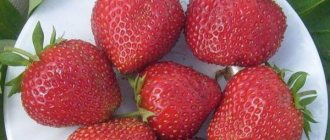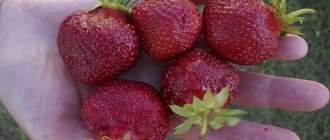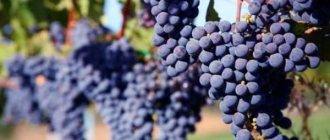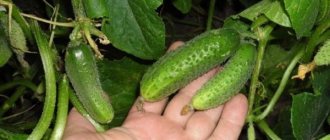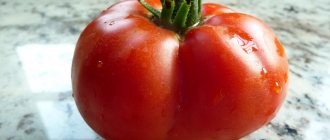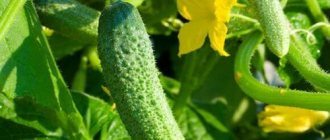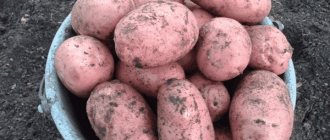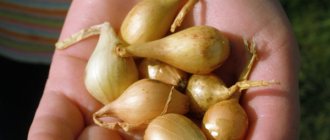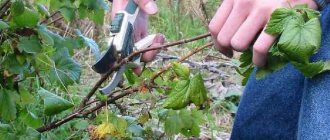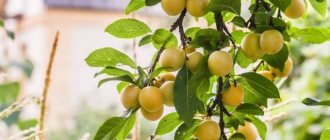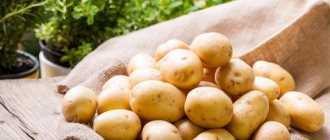Description of the Senshui onion variety
The main features that a vegetable grower needs to know are contained in the description of Senshui onions. Belongs to winter varieties. A plant up to 50 cm high with lush dark green feathers. Mature bulbs have a semicircular flattened shape and are covered with dark golden scales. The taste of the bulbs is salad, sweet, in addition, they have a pleasant aroma without a pungent onion smell. It has a whole list of advantages, for which it is valued by vegetable growers.
Senshui onion is a biennial crop. Onion sets are first grown from seeds, which are planted in the second year to produce full-fledged bulbs.
Onion sets Senshui: variety description
When describing Senshui onions, it is important to pay attention to the characteristics of the sets. It is divided into categories by size:
- “Oatmeal” – up to 1 cm;
- small has a size from 1 cm to 1.5 cm;
- first category, differs in dimensions from 1.5 cm to 3 cm;
- the largest is “sampling”, the diameter of which is 3 cm or more.
The Senshui Bow has a feature that is worth knowing. Large heads grow from the smallest planting material. It tolerates winter more easily and produces a good harvest. But the large Senshui set is used to produce greens. As soon as warm days arrive, it actively germinates and produces an early harvest of feathers.
What is winter onion
Traditionally, garlic is planted in the fall. Onion varieties for planting in winter, which includes Senshui, were developed not so long ago. These are hybrids in which the bulb begins to form when the daylight hours are 12-14 hours. The onion variety for autumn planting must have the following qualities:
- good frost resistance;
- rapid growth with the arrival of heat;
- maximum germination;
- formation of a strong bulb.
There are varieties that can easily tolerate even Siberian frosts, but some species, especially sweet onions, prefer the warm, mild climate of the southern regions. According to the description, the Senshui variety is designed for the fifth and sixth frost resistance zones.
Read also: How to grow roots on an orchid above water
Frost resistance zones are horizontally oriented areas divided by average annual minimum temperatures. There is an accepted division into 13 zones, from arctic to tropical in increasing order (the lower the value, the colder the zone). Most of Russia is located in zone No. 4. The fifth zone begins in the area of St. Petersburg and Vladivostok and covers the middle part of the country, Belarus, Ukraine, and the Baltic states.
The Senshui variety easily tolerates stable frosts down to –15°C, but can withstand lower temperatures if the frost does not last long. Each region has its own climatic characteristics, the ratio of temperature and humidity. In the same area, winter conditions can differ dramatically from each other depending on the location of the site, its illumination, and soil moisture. For cold northern regions, planting Senshui in winter is not recommended.
The description gives a complete picture of the variety, but you can only understand how suitable the variety is for your area through experience. It is best to choose seed material that has already been acclimatized.
Characteristics of the Senshui onion variety
Senshui winter onions have good quality characteristics. Vegetable growers from different regions note its stable high yield, unpretentiousness and disease resistance.
Productivity
Senshui is an early ripening variety. This explains its popularity among Russian vegetable growers. The climatic conditions of the regions and the length of the winter period lead to an urgent need for an early harvest of crops. Winter onion varieties can provide a quick, high-quality harvest. It is harvested 2 months earlier than during spring planting of spring varieties.
The yield of the variety is 4 kg of heads per 1 sq. m of planting area. The weight of one bulb reaches 150-180 g; with good agricultural technology, heads of 250 g each are harvested. The pulp is juicy and white. You can increase the yield by competently regulating the watering of the variety.
Resistance to diseases and pests
The originators in the description of the Senshui yellow onion indicate the plant’s high resistance to powdery mildew.
Advantages and disadvantages of the variety
Based on reviews of Senshui winter onions, you can make a list of the pros and cons of the culture.
Advantages:
- Early ripening. The feathers are ready for culinary use in early spring; when planted in the second year, the bulbs are ready for harvest in mid-summer.
- Frost resistance. The Senshui variety tolerates temperatures down to -15°C. In addition, even lower temperatures do not cause harm if severe frosts are short-lived.
- Productivity, which is considered quite high for winter varieties.
- Its taste qualities make it possible to use the vegetable not only when preparing fresh dishes, but also to preserve the bulbs.
- Storage and transportability at a high level. Senshui lies for up to 6 months without losing its qualities.
- Not subject to shooting.
- Unpretentiousness. Care consists of a short list of activities. And in the spring, the bulbs don’t even need watering.
The disadvantage is considered to be lower yield compared to spring varieties. Although careful selection of planting material greatly increases this figure. The second disadvantage is the short shelf life. But all early ripening bulbous varieties have this drawback.
Advantages and disadvantages of the variety
The main advantages of the Senshui variety:
- early maturation;
- frost resistance;
- high yield for a winter variety;
- versatility of use;
- possibility of long-term storage;
- lack of shooting;
- ease of care.
Minuses:
- not suitable for growing as winter onions in northern regions with consistently low air temperatures;
- lower yield compared to spring varieties.
Differences from other varieties
A comparison of Senshui with other varieties of winter onions is presented in the table:
| Variety | Productivity, kg/m² | Bulb shape | Taste | Bulb weight, g |
| Senshui | 4 | Round, slightly flattened | Sweetish | 160-180 |
| Radar | 7-8 | Round | Sweetish-spicy | 150-300 |
| Shakespeare | 3,5 | Round | Peninsular | 100-250 |
| Centurion | 4-5 | Slightly elongated | Spicy, spicy | 90-130 |
Planting and caring for onions
Planting winter onions has its own characteristics. For winter varieties, you must carefully follow all recommendations. Only in this case can you count on a decent result. Next, the basic requirements for planting and caring for Senshui onions will be presented.
Onion planting dates
Winter Senshui sets are planted at a time that depends on the climatic characteristics of the region. If these are the southern regions, then the optimal period is November. For northern ones, the dates should be shifted by a month and a half and planting should be carried out in September or October.
Important! Planting must be completed before frost begins.
Frozen soil will harm the planting material, and early planting can lead to premature germination.
Preparing the bed
The location for the beds should be chosen carefully. Senshui prefers an area protected from the wind and well lit. The lowland is not suitable due to the accumulation of water when the snow melts. In such conditions, the bulbs begin to quickly warm up.
The bed is prepared in compliance with crop rotation. Senshui can be planted no earlier than 5 years after the previous cultivation of legumes, bulbs and potatoes. Ideal predecessors are beets, carrots, cabbage, and greens.
Preparations begin 2 weeks before the scheduled planting date. The soil is dug up with the simultaneous application of humus and mineral fertilizers, then the bed is left for the soil to settle.
Before planting, the bed is sprinkled with wood ash and a ridge 20 cm high is formed.
Planting onions
No preliminary preparation of planting material is required. The sets do not need to be soaked or trimmed.
You will need to make furrows in the prepared bed. The depth of each is no more than 5 cm, and the distance between them is about 15 cm.
Senshui onion sets are placed along the furrow. It is important at the time of planting to ensure that the neck is 2 cm below ground level. The distance between two bulbs is maintained no more than 15 cm.
The top of the sets is covered with earth, then with humus. Be sure to insulate the bed by laying a layer of spruce branches or sawdust. There is no need to water immediately. You can slightly moisten the bed after 10 days in dry weather.
Growing onions
Caring for Senshui onions begins with the onset of spring. When the heat is stable, the bed is freed from covering mulch, then fertilized with urea. For 1 sq. m will need 10 g of substance.
Then the soil is loosened and sprinkled with a thin layer of wood ash. After the formation of 4 leaves, the culture is fed with phosphorus (20 g per 1 sq. m) and potassium (10 g per 1 sq. m). The optimal way to fertilize Senshui onions is watering with liquid solutions.
Water the beds no earlier than May and as needed. Each watering is completed with careful loosening.
Care in spring and summer
Caring for winter onions differs little from cultivating spring varieties. After removing the mulch, you should fertilize the soil with urea (10 g/m2). Then thoroughly loosen the soil.
You can cover the area where the bulbs are planted with a thin layer of ash. When 3–4 green feathers are formed, the next fertilizing is carried out with a mixture of potassium (10 g/m2) and phosphate (20 g/m2) fertilizers.
They are best applied in liquid form. Fertilizers are dissolved in water or in “chatter” (a diluted infusion of herbs for watering garden plants). Experts warn: fertilizers must be applied strictly according to the recipe. It is better to “underfeed” plants than to “overfeed”.
Water onions only when necessary. In this case, drying out of the soil should be avoided. On dry soils, seedlings will be late and weak, which will affect the yield and quality of the vegetable.
The soil should be thoroughly loosened after each watering. This simple agrotechnical operation has a positive effect on development and growth and accelerates ripening.
Harvest ripe bulbs before the neck dries.
Harvest and storage
The variety begins to ripen in early summer. Depending on the growing region, harvest time occurs in June or July. Stop watering and loosening within 2 weeks. During this period, the heads gain maximum weight, and their scales dry out. Therefore, you should not stimulate the growth of greenery with such actions.
Cleaning begins before the leaves turn completely yellow. Otherwise, after the first rain, Senshui will begin to form new roots.
The bulbs are carefully pulled out of the soil and laid out on the ground to dry. In dry weather, drying lasts a week. In addition to drying, the sun's rays have a disinfecting effect. After a week, the harvest is sent under a canopy and kept there for 20 days. Such heads are stored better. During the rainy season, the crop is transferred to a well-ventilated but closed room for drying.
Then a bulkhead is carried out. Undamaged, dense bulbs are put aside for storage. Leaves are cut at a height of 5 cm from the neck. Then the roots are cut off without touching the bottom. Place Senshui in nets, baskets or boxes with ventilated walls. Many people weave braids, which make it easier to control the condition of the bulbs during storage.
How to choose seeds
Onions are a biennial crop. That is, in the first year they get small onion sets, and the next year they grow into a full-fledged head. Onions are grown from seeds, which are also called “nigella onions,” and the actual set.
- Black onions and flower stalks
Seeds are formed in umbels growing on onion peduncles (arrows). Shooting (the formation of arrows) is not encouraged; it takes away the strength of the plant, as a result of which the bulb does not receive enough nutrients and does not grow to its optimal size. The Senshui variety is very convenient in this regard because it practically does not throw out the arrow, which means it can use its entire reserve of strength to form a dense and strong head.
When choosing seed material, you need to pay attention to size. Sevok must be calibrated:
- up to one centimeter (“ovsyuzhka”);
- 1st category sowing (1-1.5 cm);
- 2nd category (1.5-3 cm);
- over 3 cm (“samples”).
Paradoxically, the smaller the set, the stronger and larger the onion head will grow. Small wild oats do not tolerate storage well; if the temperature is not maintained, they dry out first. Therefore, it is better to plant them before winter. The bulbs will overwinter well in the ground and produce a dense, large head the next season.
Larger bulbs are planted “on the feather”. When the first warm days arrive, they will actively begin to grow and produce an excellent harvest of greenery in early spring. They can be planted in the spring, but the sets need to be treated with a disinfectant solution and the neck of the bulb should be trimmed a little, then the plant will not get sick and greenery will appear faster.
